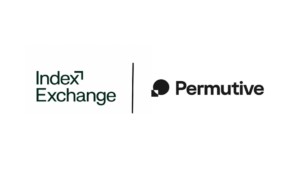As the use of programmatic buying becomes more common in relation to digital Out of Home (OOH) advertising, can the Outdoor industry avoid the mistakes and unforeseen consequences witnessed in other programmatic channels?
This was just one of the questions posed at a recent gathering of OOH industry experts, hosted by New Digital Age (NDA) in association with leading premium global digital OOH supply side platform VIOOH. NDA editor Justin Pears chaired the roundtable discussion, where he was joined by: Jem Djemal, Global New Business Lead, VIOOH; Ben Carter, Global Chief Customer & Marketing Officer, Carwow; Michelle Sarpong, Commercial Lead, the7stars; James Shoreland, CEO, VCCP Media; Oliver Saunders, Global Head of Addressable Solutions at Wavemaker; and Emma Withington, Chief Planning Officer, MG OMD.
VIOOH’s Djemal believes that the deprecation of third-party cookies obviously represents a challenge to advertisers but also a big opportunity for the OOH marketplace. He said: “Sure, deprecation has been delayed and staggered but it’s happening.
“When you think about OOH, it’s a format that has never been dependent on cookies to make an impact or find an audience. Instead, factors like context and location have always been key, so as advertisers start to think about their creative a bit differently, programmatic DOOH in particular is in a really strong position to capitalise on that as it’s had years of optimisation, as opposed to retrofitting or responding reactively.
“At the same time, things like the measurement and verification of OOH campaigns are improving all the time. An example of this is the really interesting intersection we’re seeing between DOOH screens integrating programmatic in the retail media environment, closing the loop on the use of 1st party data to not only inform creatives but also to measure campaign success. This is producing some really innovative measurement strategies at the moment. The confidence of OOH media owners is growing, which is making things a lot more interesting for us.”
Carter of Carwow commented: “From a scale up business perspective, where we don’t have big brand budgets, and everything we do as a marketing team has to have a positive ROI, programmatic OOH can help us to achieve real standout and memorability. There are a myriad of metrics and engagement KPIs you can measure the effectiveness of Outdoor campaigns and we often use digital OOH to test campaigns against different locations but, for me, that extra memorability is a key advantage of the channel.”
A class apart?
Sarpong of the7stars believes that OOH has the opportunity to set itself apart from other programmatic channels by being fully open and transparent in terms of its capabilities and impacts.
“When connected TV first emerged, lots of agencies encouraged clients to invest 20% of their TV budget towards BVOD to help deliver incremental reach. Many have since had to backtrack on that a little because we didn’t fully explain who brands who they would be reaching via CTV and what to expect in terms of return.
“Whereas, in programmatic OOH, we have the chance to make the case more clearly and control the narrative that we need to drive things forward. We can get ahead of the investment curve and talk about context, talk about data, talk about Dynamic Creative Optimisation and lead with things like that.”
VCCP Media’s Shoreland pointed out how programmatic was originally created as a tool to help media buyers keep up with the proliferation of media: “The AMA (American Marketing Association) estimates that a typical digital campaign now appears on 44,000 websites, when in reality, we probably only need about 1,000 of those to be effective. Somewhere along the line, programmatic has gone wrong and we’ve lost the art of planning and creativity as a consequence.
“The interesting thing about programmatic OOH is that you have a finite amount of inventory, so planning and buying OOH becomes less about expediency and more about effectiveness. The evolution of Outdoor gives us a great opportunity to reframe strategy and planning to be about doing less for more impact, rather than doing more for less money.”
Shayer of Boots agreed that the ‘infinite’ nature of programmatic display inventory has left brands without any real understanding of where they are showing up online.
“As a result, we’ve had to effectively create a second industry, where we pay someone else to verify that your ads are where they are supposed to be, rather than on countless Made For Advertising (MFA) sites. Lots of marketers have lost faith in programmatic display as a result, which could represent a good opportunity to digital OOH media owners, with their high-quality, more easily verifiable screens.”
A new hope
Expanding on the unintended consequences of programmatic buying in the wider marketplace, Wavemaker’s Saunders commented:
“When programmatic caught on in financial markets, there was enormous compression of fees and margins, and, suddenly, there were fewer, bigger players taking more volume to make it all work. The technology evolved in such a way that straight-through processing became a thing. Middle offices and back offices full of people that would settle trades and things like that suddenly weren’t there anymore.
“We’re not in that situation yet in relation to programmatic OOH so I hope we can find a better balance this time round. Part of me also hopes that programmatic OOH doesn’t become too focused on data and that we can retain more trust in the ‘magic’ that only outdoor advertising can deliver.”
Withington of MG OMD added: “There’s also the opportunity to learn lessons from programmatic display in relation to brand safety and how we can operate in a more responsible way that avoids the thousands and thousands of impressions that we don’t need.
“That gives me a bit of hope that programmatic OOH isn’t going to be as murky and messy as programmatic display has become, with various ‘dark arts’ in play around the world. OOH could even become the ‘golden child’ of the industry in terms of transparency and measurement.”
Read Part One of this roundtable recap here.












